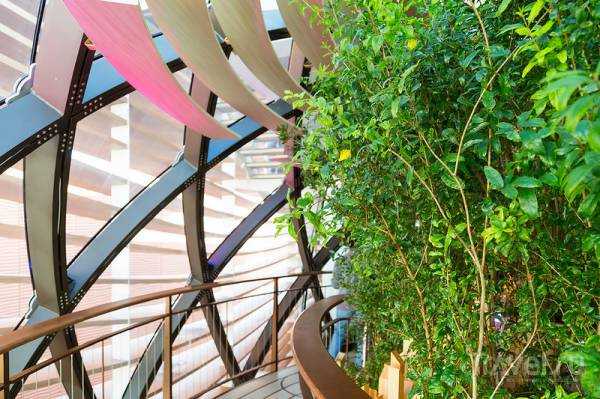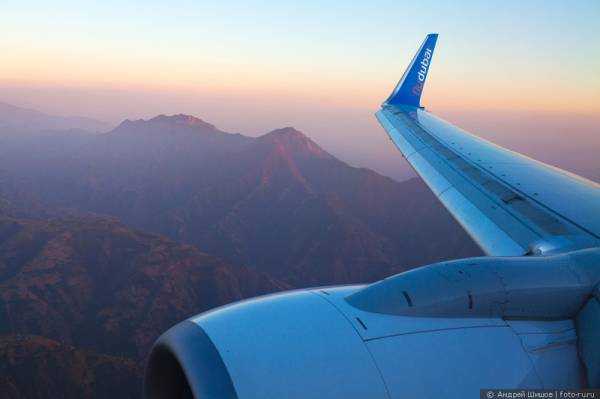Friends, I have left you again for a while. The New Year's revelry was replaced by my pilgrimage to India and Nepal. Upon my return, a series of holidays - birthdays - awaited me again. Having escaped to freedom, I want to share my impressions of my recent travels. And I will begin with a story about how my friend Denis and I went trekking in Shivapuri Park.
Of course, our route in terms of complexity and duration cannot be compared with the tracks around Annapurna. It was an easy two-day route, which would probably be more correct to call hiking. However, perhaps for this very reason it will be interesting for those who want to see the nature of Nepal, but do not have the opportunity to go far from Kathmandu. We were in exactly this situation and therefore decided to “walk” for two days in the Shivapuri National Park.

It must be said that the Nepalese surrounded us with care from the very first steps. More precisely, I got from the airport to the hotel without much attention from local tour operators, but a certain guy got into Denis’s car (he was arriving on a different flight). “I work in the same hotel where you’re going, do you mind?” On the way, the guy showed us the sights (Denis prudently said that he wouldn’t pay for the excursion), helped us carry our suitcase and handed us a business card, saying that he worked in an agency right across the street from the hotel (and indeed, it was right next to the door), and suggested that we stop by his place later and just see what they could offer to brighten up our days in Nepal. So, he didn’t work in any hotel. But how did he guess – or quickly find out? – that Denis was going to the hotel across from his agency, remains a mystery to us.
So, why not go in, we thought. And now they are unfolding panoramas of exciting hikes for three, four, five days before us. No, no, we want something shorter, closer, not so high, but so that it is beautiful. Shivapuri National Park? And what will we see? Mountains? And Everest? And waterfalls?.. And animals?.. Two hundred and sixty dollars for two days for two? Maybe it would be better to cost a hundred? Or a hundred and sixty?
In the end, for two hundred dollars for two, we bought a package that included transfers to the starting and ending points of the trek, a guide for two days, a night in a mountain hotel, and permits to enter the national park. Did we overpay? I don’t know. On the first day, we met a Russian couple at the entrance to the national park – he was an oilman, she was a blonde.
– How much did you spend on the track?
- Oh, we don’t really count.
- Hm. Well, how much did you pay for this particular route? If it's not a secret.
- Oh, for this one? Five hundred dollars. (Apparently, something showed on our faces.) What, you paid less?
We decided not to be cruel.
- Yes, a little less. Maybe your hotel will be better.
- Yes, we were promised a luxurious hotel!
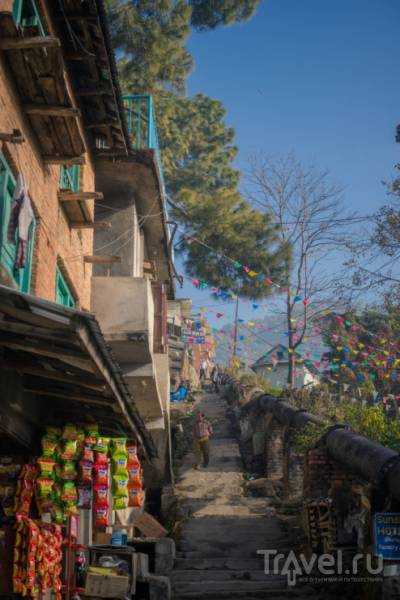
Our route began in the village of Sundari Jal. Like many other villages in Nepal, it is located vertically - by the time you walk from one end of the village to the other, you will climb about a hundred or two hundred meters. It was about nine o'clock in the morning, and fog was swirling in the valley. From the light-filled fog, huge red leaves, black branches, and a piece of a mountain emerged.
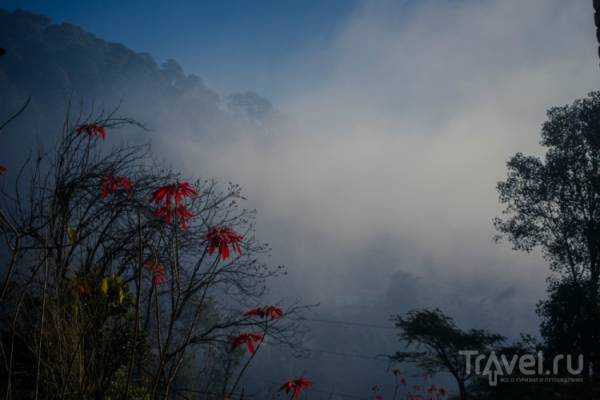
The village lived its own life.

Women combed their hair

or fed the goats.

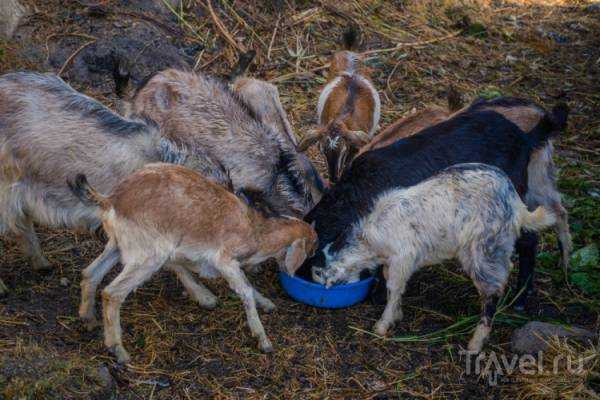
The buffalos chewed hay melancholy.
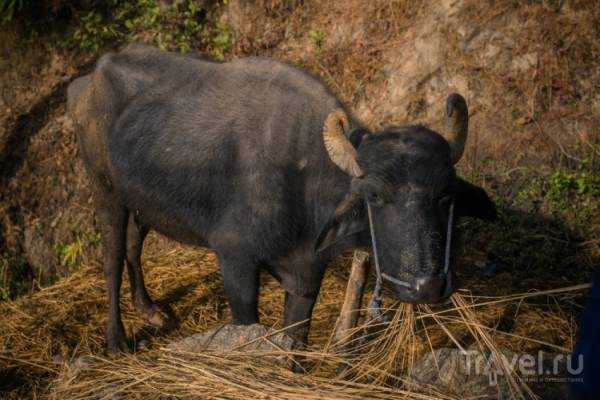
On the way we saw a small waterfall.

Next to it was a small shrine of Shiva with a lingam and yoni.
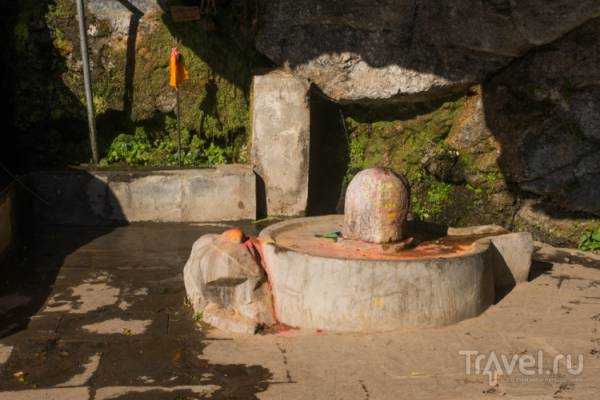
A stream flowed out of the rock. Denis was about to drink, but he noticed my skeptical look and thought about it.
“Today is Epiphany, all water should become holy,” he said thoughtfully, looking at the lingam. “So it’s safe to drink.”
- So what's the problem? I don't mind.
In the end, Denis decided to drink holy water from the bottle.
As we climbed up, we reached the next village, which was called Mulkarha. In front of it we saw an interesting tree, resembling an elephant with an extended trunk. Our guide did not understand our interest in the tree.

- Well, look, it looks like an elephant!
- Yes?.. mmm…
- Oh, you could bring tourists here specifically. You could even tell them a legend. Well, for example, about an evil elephant that appeared around the village, trampling people and crops. The peasants began to pray to Krishna, and he turned the elephant into a tree.
Our guide laughs happily. Krishna is his name too. "Do we have anything to eat?" "We'll ask Krishna!"
We stopped to have some tea – the view was so good. While we were waiting, I asked the old man to cut me a stick. The stick turned out great – it will serve me faithfully for two days.

We go up through the village again.

Most of the houses are two-story. Corn dries under the galleries – then it is ground into flour and cooked into porridge.
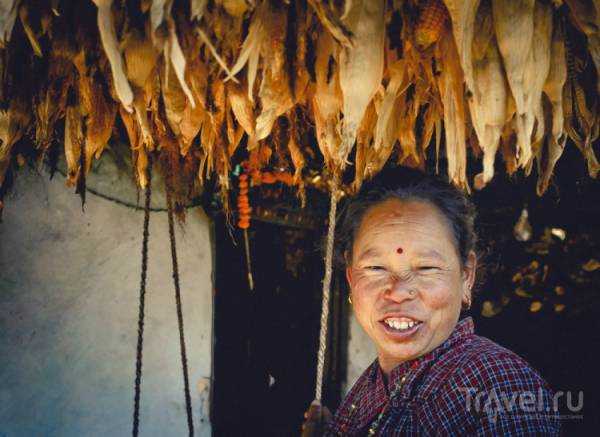
The locals look at us without much curiosity – there are a lot of trekkers passing through here.
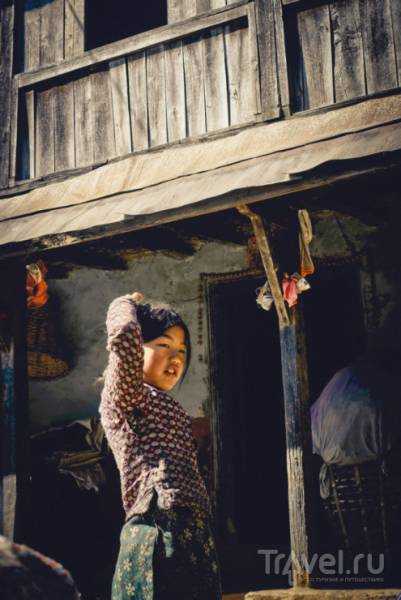
The boy shyly covers his face with his shoe,

An old lady blows a kiss.

At the exit of the village we decide to have a snack – as Krishna says, there will be no more food until evening. A small house, nearby they wash plates.

A nice but slightly gloomy woman prepares thukpa, a thick Tibetan soup, for us.

And again on the road. We climbed some hill, the road is mostly flat. We walk for several hours. In some places there is snow in the shade. Krishna has time to grow a green beard, which makes him look like a leprechaun.

When the path runs through the forests, it is boring to walk - the forest is like a forest, in my opinion, not much different from the outskirts of Saratov (although Denis periodically hangs over some flowers). The most interesting thing is when you come out of the forest to the edge of the mountain and see yourself in the center of the mountain bowl. Under Krishna's guidance, we calculate Everest.

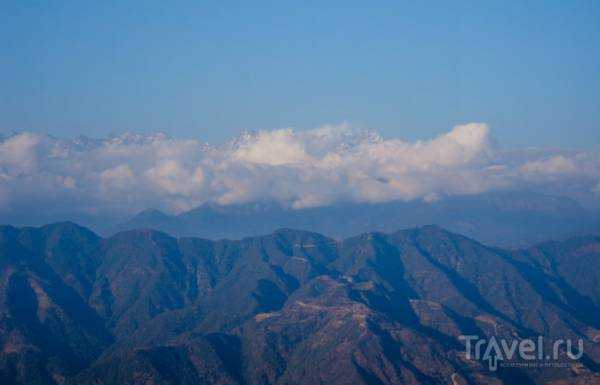

The day is slowly drawing to an end.

Two important tasks arise: to reach a point with the best view by sunset, and it is desirable that this point be Chisapani, where we plan to spend the night (so as not to wander in the dark later).

We enter Chisapani when the sun is already hanging over the horizon and immediately climb onto the roof of our "hotel". Oddly enough, there was no one there except us. Meanwhile, the general impression was like that of a theater stalls. A play was going on around us, where the roles were played by the sun, light and mountains. There was a feeling that Roerich's paintings had seemed to you to be the posters for this play. And you also thought that Roerich's colors were sometimes unreal, intensified, too poster-like and garish, to the point of vulgarity. But reality turned out to be very close to what we see in Roerich.

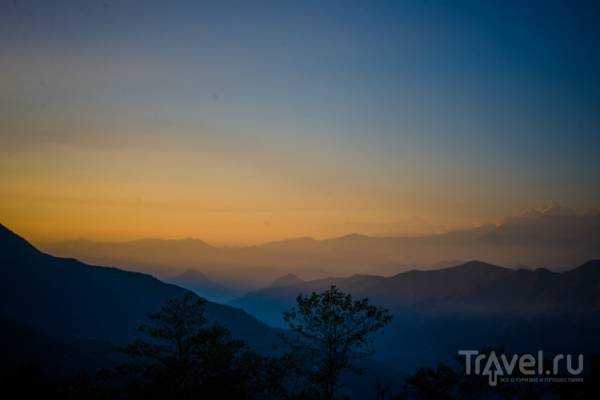





(By the way, the next day I came across an interesting episode in Morris's book "Winter in Nepal". The main character admires the Nepalese landscape, and his companion - an artist - accuses the landscape of vulgarity.)
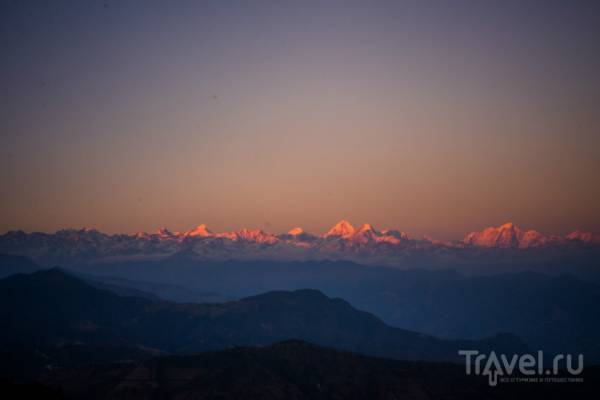
With the sunset the daylight ended, but our day in Shivapuri Park did not end.
Source: travel.ru




